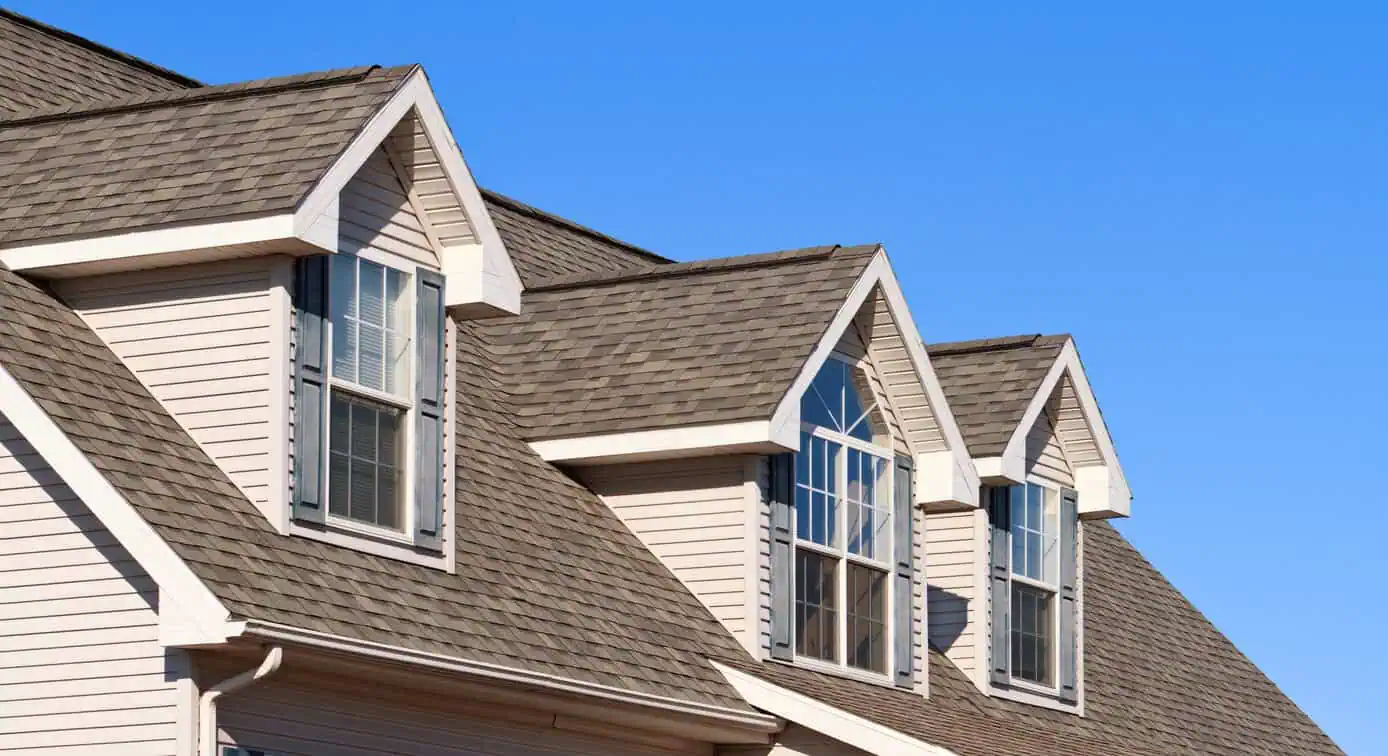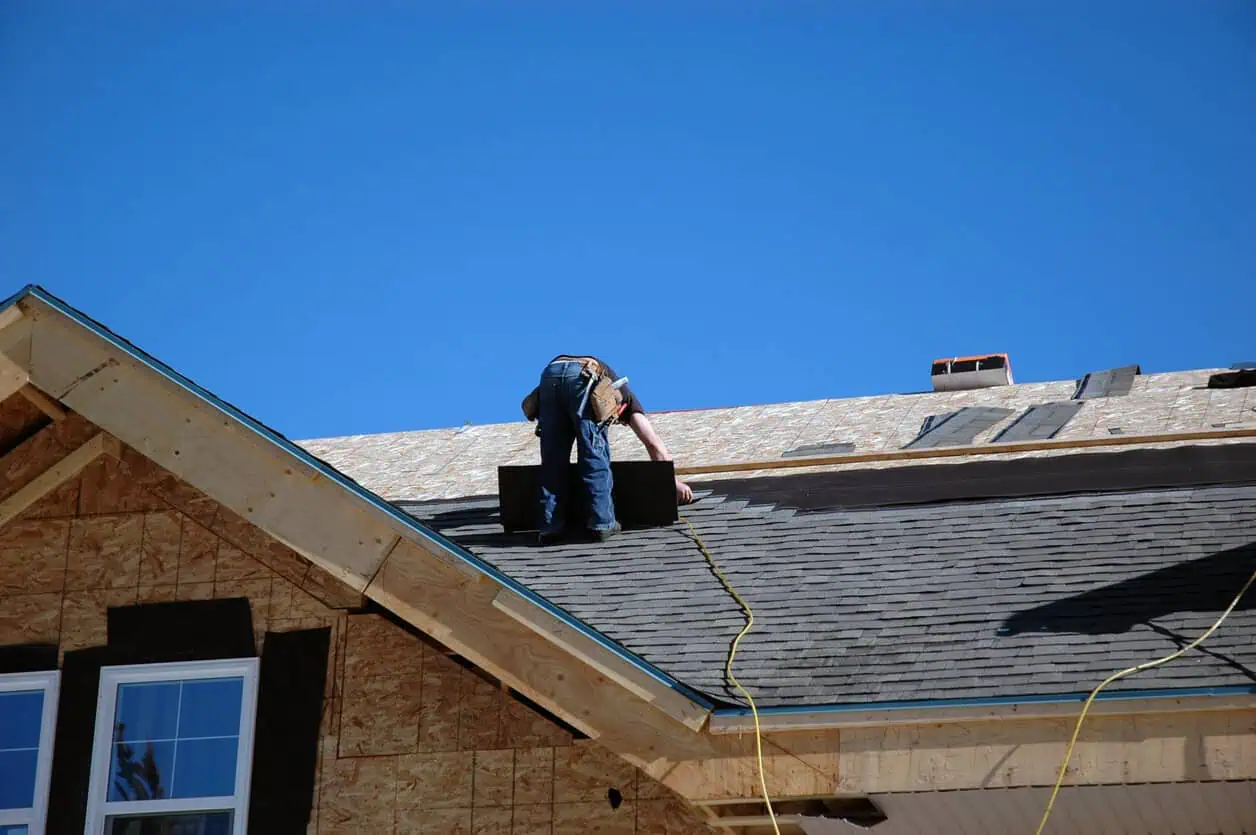Living in Michigan means experiencing dynamic weather conditions—scorching summers, frigid winters, rainy springs, and everything in between. These varying elements can really take a toll on your home, especially your roof. That’s why choosing the right roofing materials is an important investment in your home’s safety and durability.
Whether you’re renovating an old house or building a new home from scratch, understanding the different materials will ensure your roof is beautiful and built to last. But how do you find the best option for your home with so many available?
Let’s consider the four best options on the market and what factors you should pay attention to when choosing roofing materials for Michigan homes.
The Best Roofing Materials for Homes in Michigan
There are four types of roofing materials best for homes in Michigan due to their durability, longevity, and ability to withstand extreme temperature fluctuations: asphalt shingles, metal roofing, slate roofing, and rubber roofing.
Asphalt Shingles
Asphalt shingles are the most commonly used roofing materials in the United States. They’re composed primarily of a fiberglass mat topped with asphalt and mineral granules. This type of roofing is available in various colors and styles, including:
- Three-tab shingles: A lightweight, cost-effective option characterized by a single layer of material with three distinct, equally sized tabs that create a uniform, flat appearance.
- Architectural shingles: Also known as dimensional or laminated shingles, these are made from multiple layers of asphalt fused together for a richer, multidimensional texture and appearance that resembles wood or slate. These shingles are heavier and more durable than three-tab shingles.
- Luxury shingles: The highest-quality and most expensive option designed to mimic high-end roofing materials like cedar and slate shakes. These feature larger sizes, more varied shapes, and deeper shadow lines along with the longest lifespan and best weather resistance.
Asphalt shingles are a cost-effective and versatile roofing option for Michigan homes. They’re relatively easy to install and repair and provide good resistance to wind and fire when installed with proper underlayment.
However, they only have a lifespan of 15-30 years, which is shorter compared to other materials. They can also be susceptible to damage from Michigan’s extreme temperatures and sudden temperature shifts. Finally, the darker colors tend to absorb a lot of heat, which might increase air conditioning costs in the warmer months.
Metal Roofing
Metal roofing is available in sheets or shingles and made from various metals such as:
- Steel
- Aluminum
- Copper
- Zinc alloys
It’s known for its durability, longevity, and sleek, modern appearance that complements a wide range of architectural styles. It’s also popular because it can be finished in various colors and treatments to mimic the look of traditional roofing shingles, wood shakes, or even tile.
Metal roofs are extremely beneficial in Michigan due to their superior durability and weather resistance. They’re excellent for shedding snow and ice to prevent ice dams during the long, harsh winters. They’re also fire-resistant and can significantly reduce cooling costs in the summer since they reflect solar rays.
However, they can cost more upfront than other materials and may require specialized installation. They may also be noisier during rainstorms or hail without proper insulation.
Slate Roofing
Slate roofing is made from natural slate tiles, a highly durable and weather-resistant type of metamorphic rock. Slate roofs are known for their longevity and natural beauty and often last over 100 years if properly maintained. They allow for unique, elegant aesthetic designs thanks to their varying colors:
- Gray
- Green
- Purple
- Black
- Red
Other benefits include slate’s exceptional durability and ability to withstand harsh Michigan weather conditions like heavy snow and freeze-thaw cycles. It’s also fireproof and resistant to mold and mildew.
However, slate is one of the most expensive roofing materials and is so heavy that it requires a reinforced roofing structure. Improper installation can lead to rapid deterioration and increased costs, so it’s best to let professionals experienced with slate handle installation.
Rubber Roofing (EPDM)
Rubber roofing, specifically ethylene propylene diene terpolymer (EPDM), is a type of synthetic roofing material known for its versatility and durability. It’s made from a single-ply rubber material and is commonly used in low-slope or flat roofs. Rubber roofs are mostly black but can be coated with a white or light-colored coating to make them more reflective.
Rubber roofing offers excellent waterproofing capabilities, especially for Michigan properties with flat roofs that may pool water. It’s resistant to temperature extremes and can last up to 50 years with proper maintenance. It’s also relatively easy to install and repair.
The main drawbacks include its aesthetic since it may not blend well with more traditional residential architectures. It can also be susceptible to punctures from falling debris or foot traffic, which is an important consideration if the roof is accessed frequently.
8 Considerations for Choosing the Best Roofing Materials
Choosing the right materials for your Michigan home’s roof involves eight key considerations due to the state’s unique climate challenges. By carefully evaluating these factors, you can select roofing materials that look how you want without breaking the bank and stand up to Michigan’s challenging environmental conditions, ultimately protecting your investment and enhancing your home’s value.
1. Weather Resistance
Michigan experiences a wide range of harsh weather conditions, including:
- Heavy snowfall
- Severe storms
- High winds
- Extreme temperatures
- Sudden rain showers
Therefore, roofing materials should be durable enough to handle heavy snow loads, resistant to wind lift, and capable of withstanding thermal cycling—expanding and contracting due to temperature fluctuations—without damage.
2. Longevity and Durability
In such a demanding climate, you should consider the expected lifespan of your roofing materials. Materials like slate, metal, and certain high-grade shingles often have longer lifespans with minimal required maintenance, making them more cost-effective over time despite their higher upfront costs.
3. Energy Efficiency
Michigan’s harsh winters and hot summers make energy efficiency a vital deciding factor. Materials that provide good insulation and reflect sunlight can help maintain a comfortable indoor temperature and reduce indoor heating and cooling costs.
For example, metal roofs reflect heat from the sun instead of absorbing it. This is energy efficient because it can help reduce cooling costs in the summer since you don’t have to crank your air conditioner up as high.
4. Architectural and Aesthetic Compatibility
Looks aren’t everything, but they’re still important for the curb appeal and value of your home. Michigan has a diverse range of home styles, from historic Victorian to modern farmhouses. So your roofing material should complement your home’s style and be consistent with your neighborhood’s architectural themes.
5. Weight
You also need to consider your home’s structural integrity. Some materials—such as slate or clay tiles—are much heavier than others like asphalt shingles. That’s why you should make sure your home can support the roofing material’s weight without requiring additional structural support.
6. Cost
Budget is always an important consideration, especially since the cost of roofing materials can vary widely. It’s best to balance upfront costs with the roofing material’s expected lifespan and maintenance needs to gauge its overall value.
7. Local Building Codes and Regulations
It’s also vital to check local building codes and homeowner association (HOA) guidelines because they may limit the types of materials you can use or dictate certain aesthetic or functional requirements.
For example, Michigan building codes state that roofs in areas subject to ice and snow must be able to fit ice barriers underneath them that extend from the edge of the roof to a certain point inside the building’s exterior wall line. They also specify the minimum load-bearing capacity of roofing structures to support snow and ice accumulation.
Plus, additional restrictions may apply in certain environmentally sensitive areas and historical districts to minimize environmental impact or preserve historical integrity.
8. Environmental Impact
If you’re concerned about sustainability, it goes without saying that you also want to consider the roofing material’s environmental impact. Some materials are recyclable or made from recycled materials, which makes them more eco-friendly with a smaller carbon footprint in production and transport.
Get the Best Roof for Your Home with Pro Home Improvement
Choosing the right roofing material helps you protect your home against Michigan’s unpredictable climate while enhancing its appeal and resale value. Whether you choose asphalt, metal, slate, or rubber roofing, each material offers unique benefits to meet your needs.
Ready to elevate your home with a roof that’s built to last? Partner with Pro Home Improvements! We use almost 20 years of exterior remodeling expertise to provide high-quality roofing installations. Schedule your roofing consultation today to see how our exceptional craftsmanship and outstanding customer service can help you make your home as durable as it is beautiful.
Key Takeaways: The Best Roofing Materials for Homes in Michigan
- Michigan has diverse climates with extreme weather conditions and fluctuating temperatures, making your choice of roof vital to protect your home and investment.
- The best roofing materials for homes in Michigan are asphalt shingles, metal roofing, slate roofing, and EPDM rubber roofing.
- When choosing a roof, you should consider the material’s weather resistance, longevity and durability, energy efficiency, architectural and aesthetic compatibility, weight, cost, compliance with local building codes and regulations, and environmental impact.


